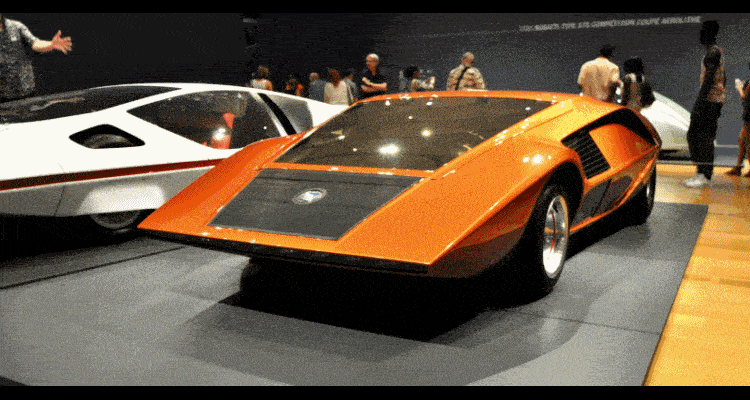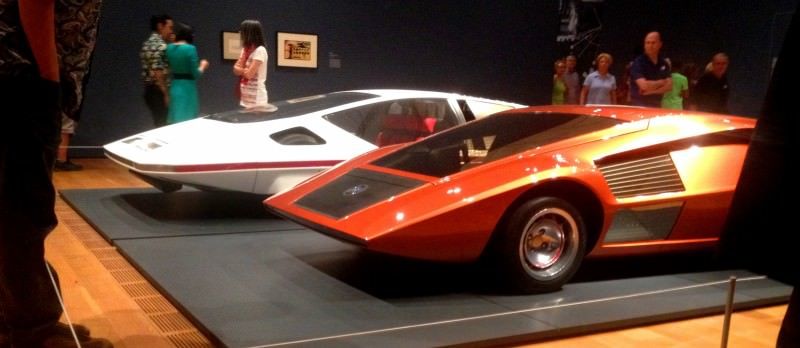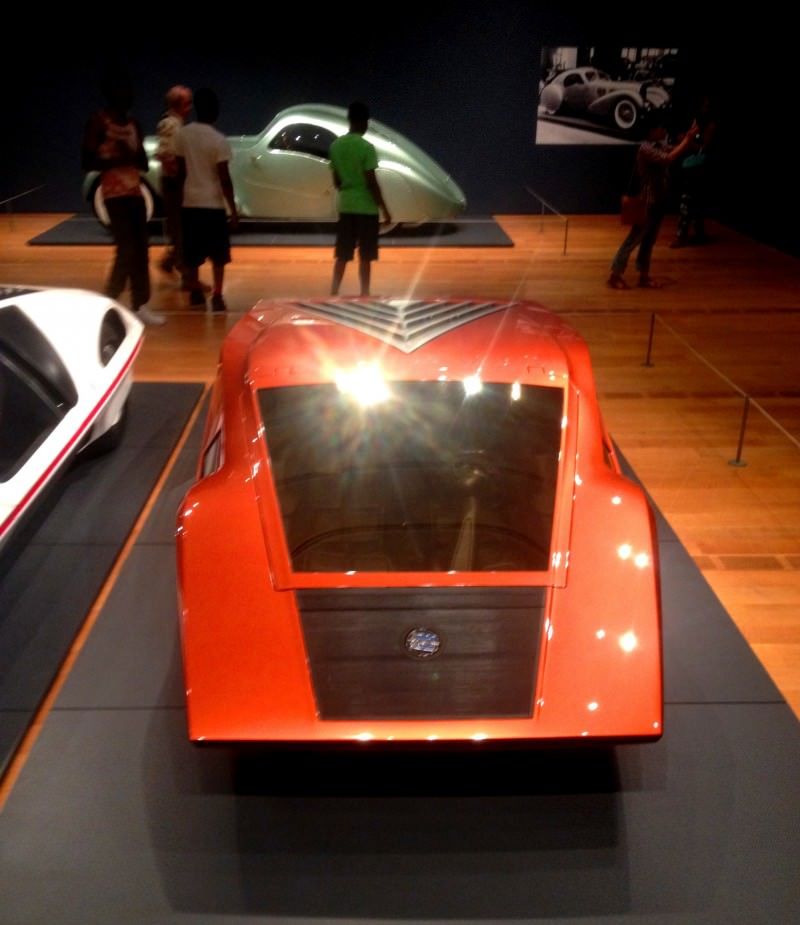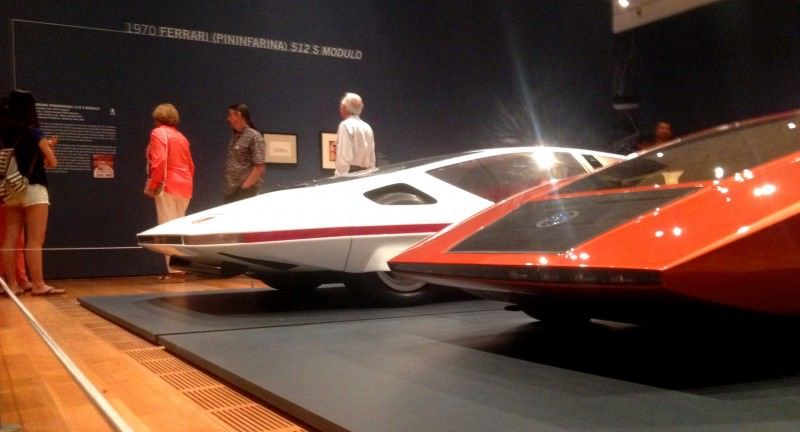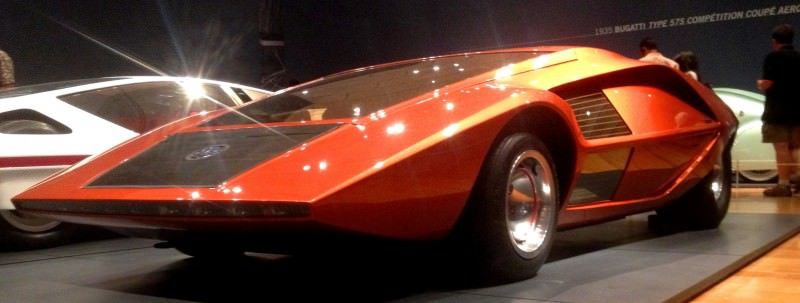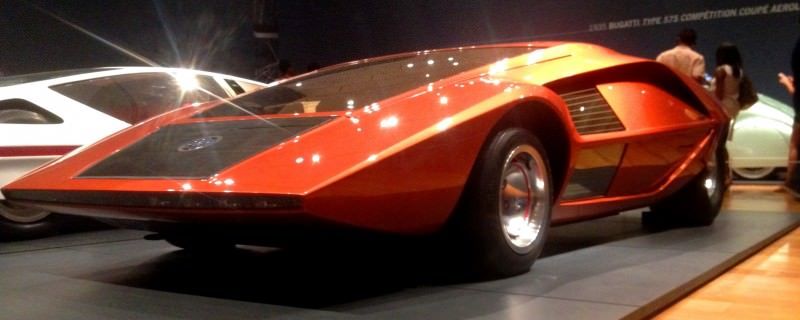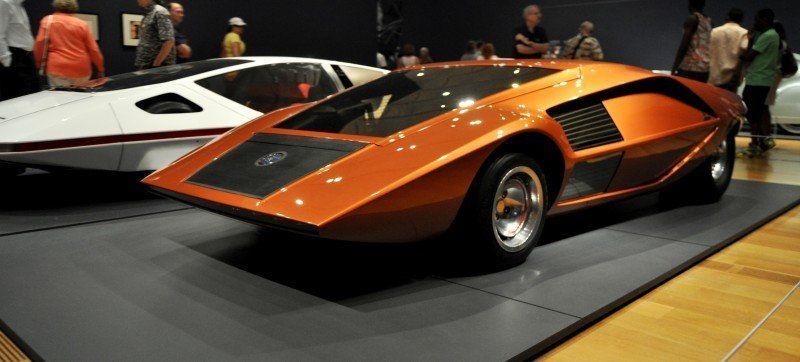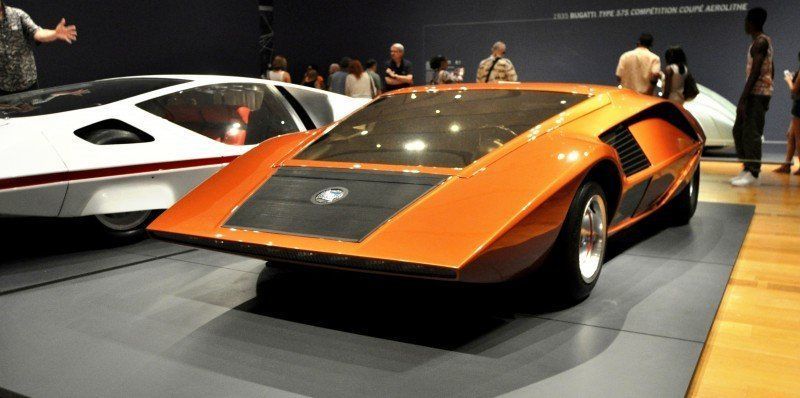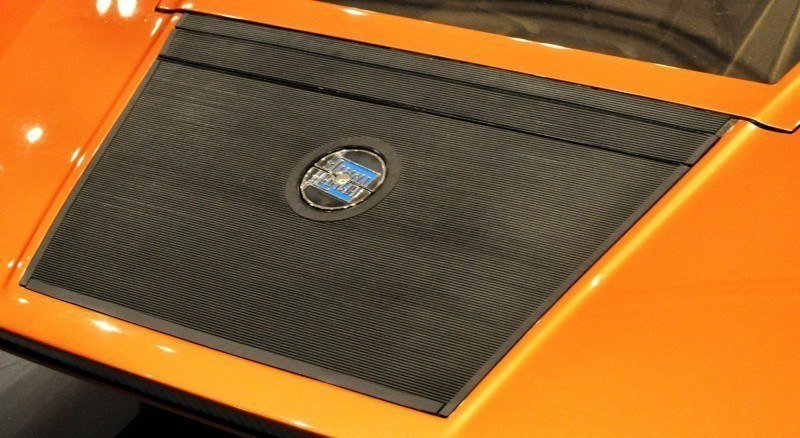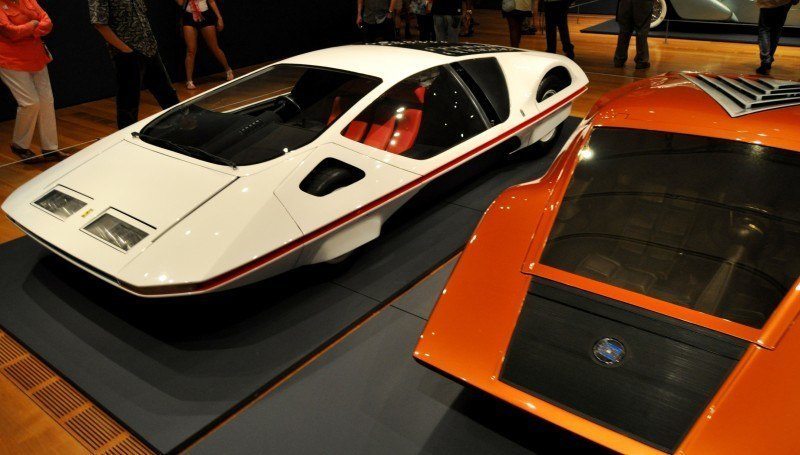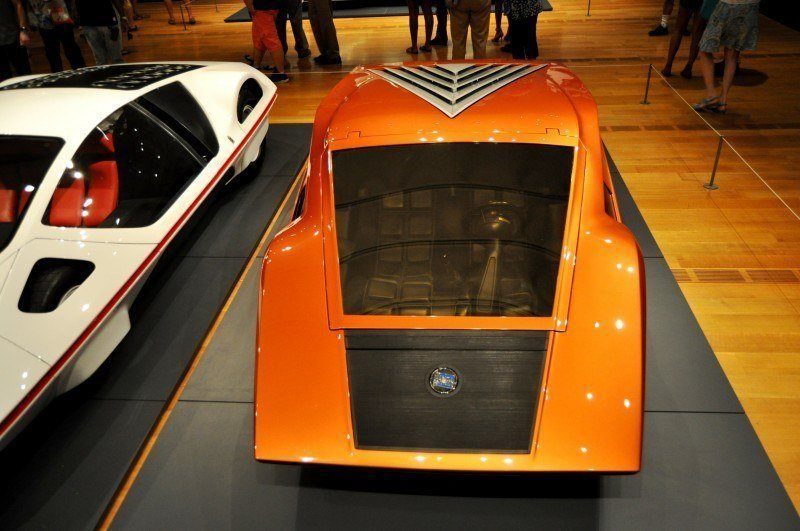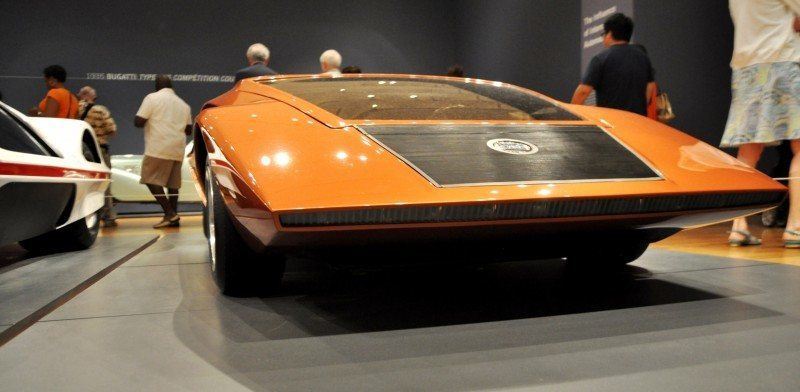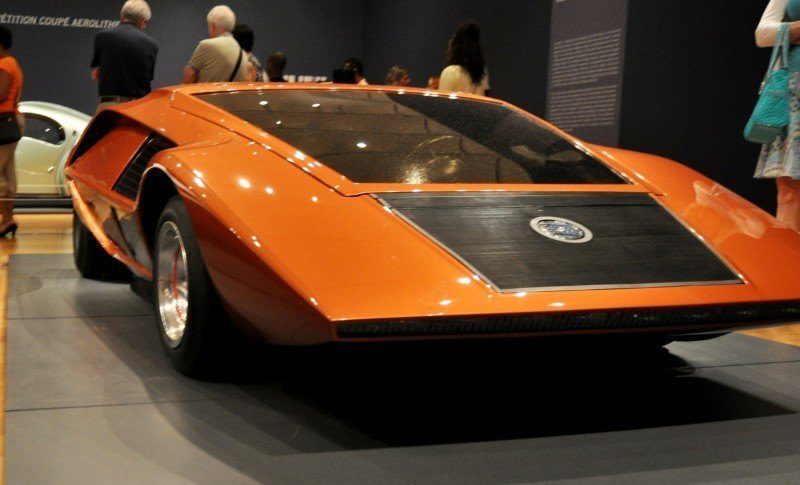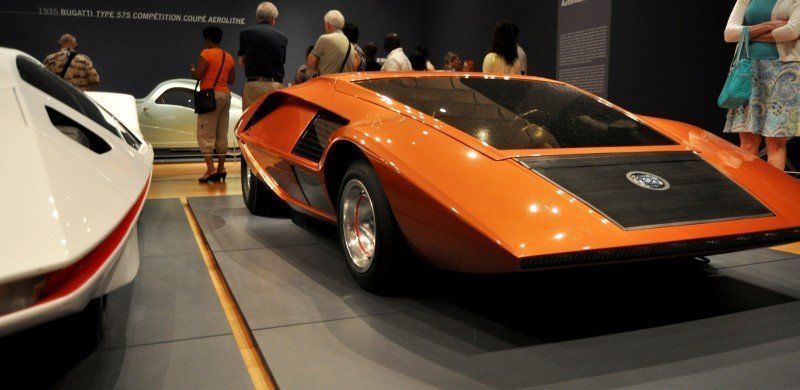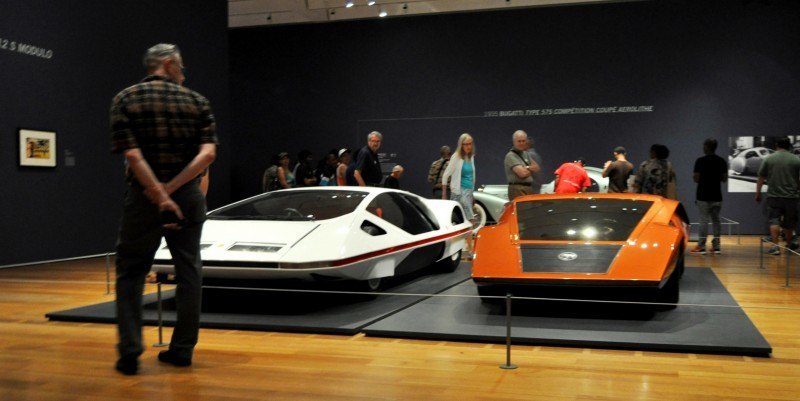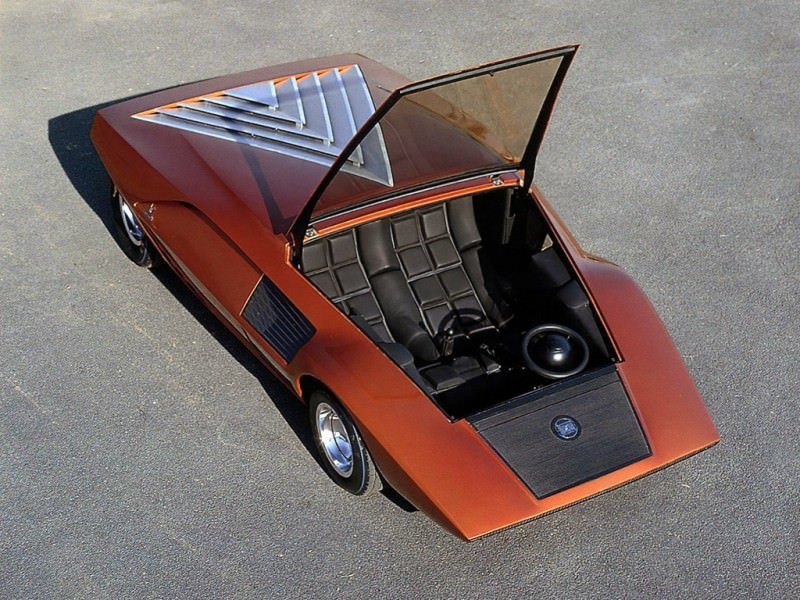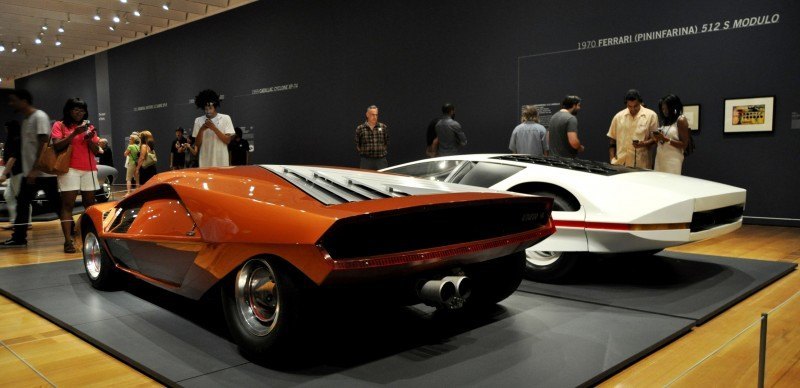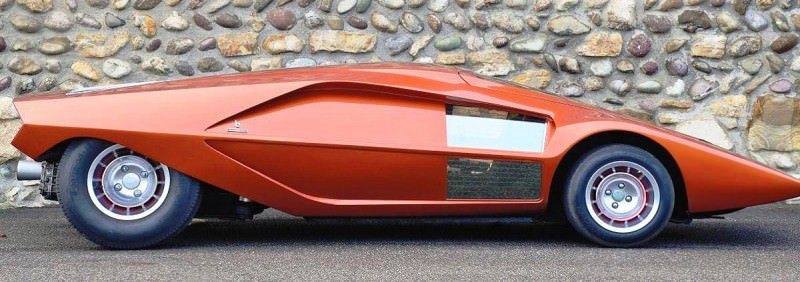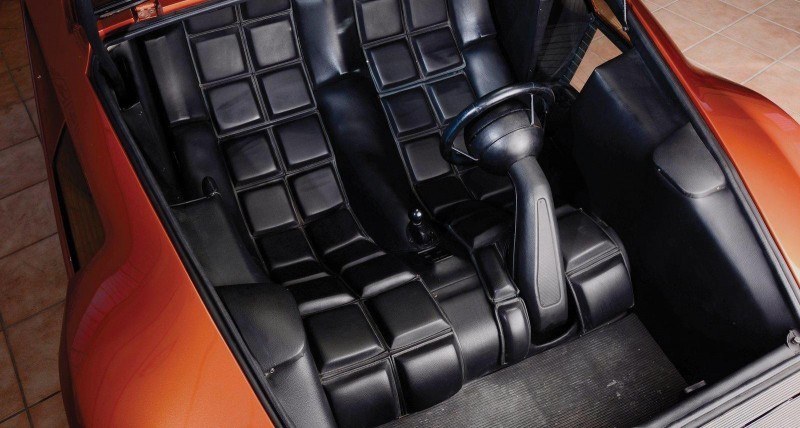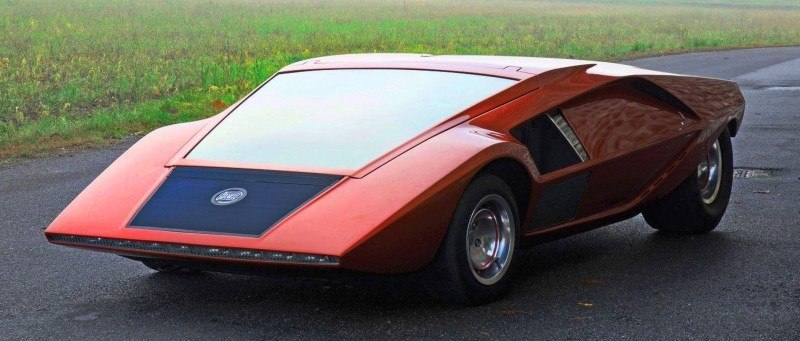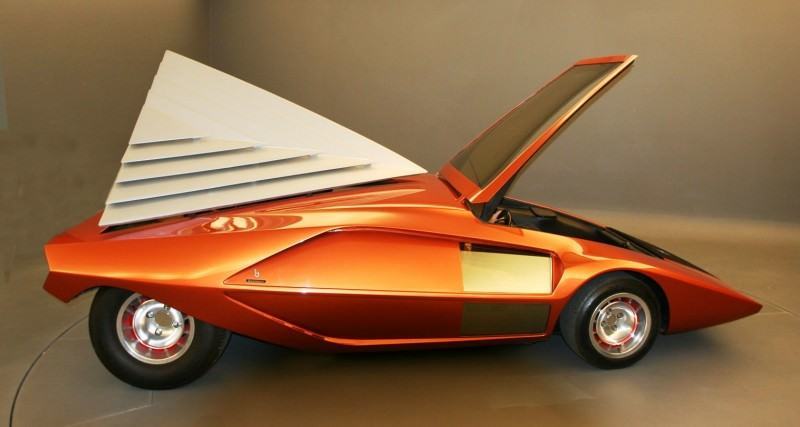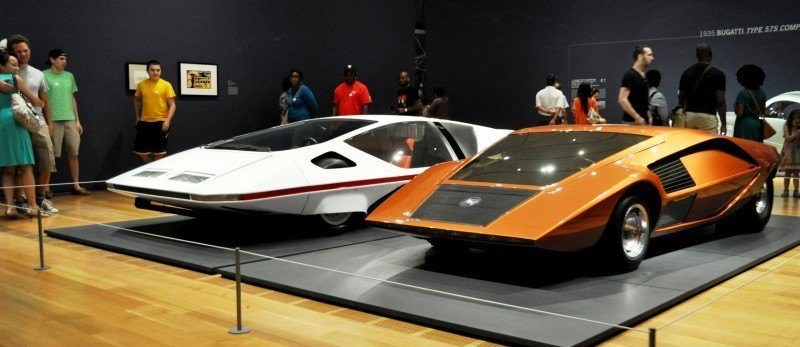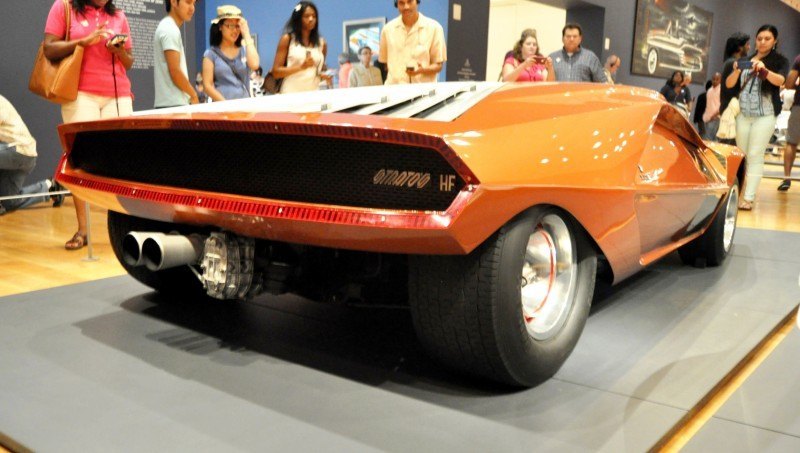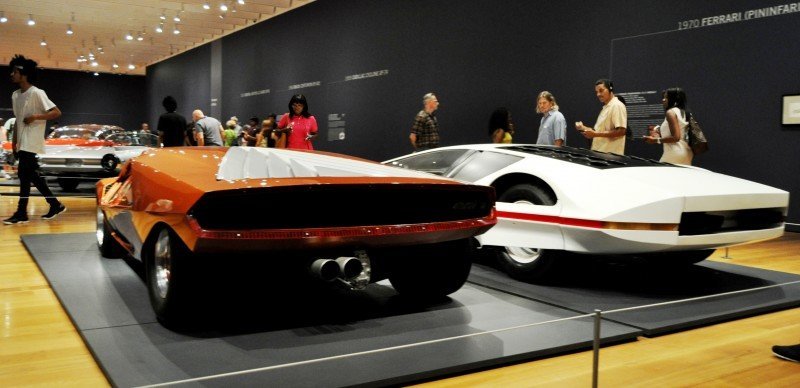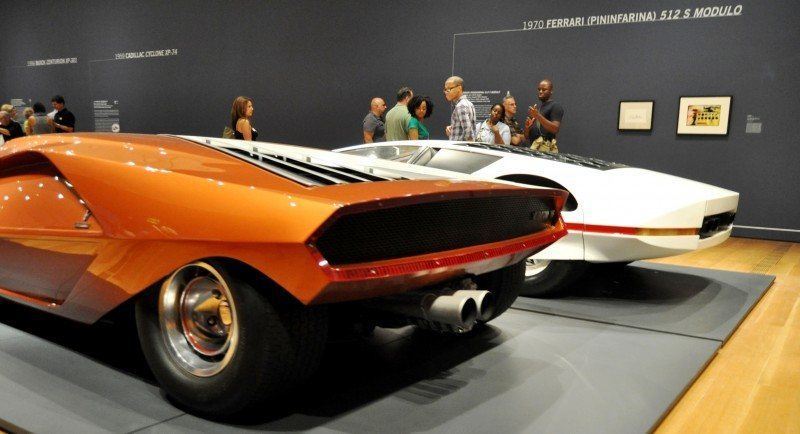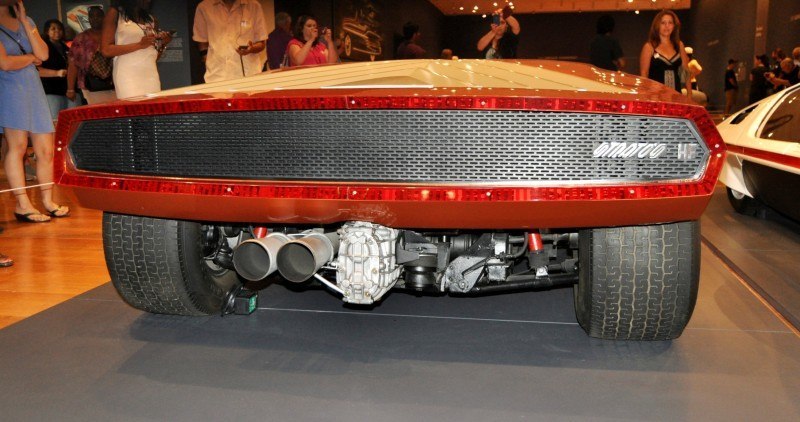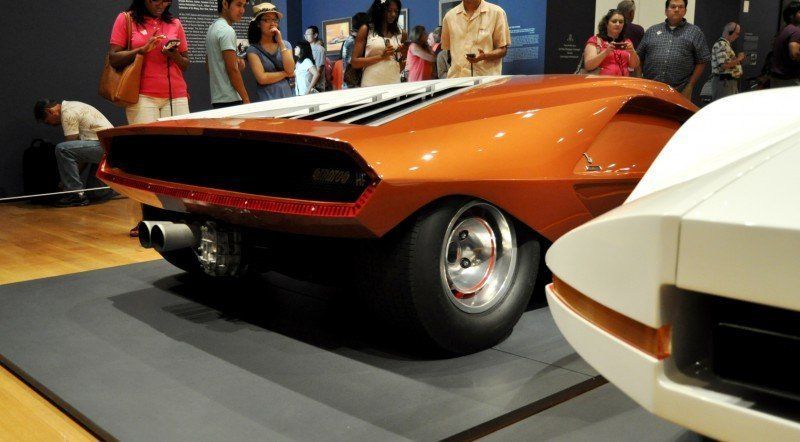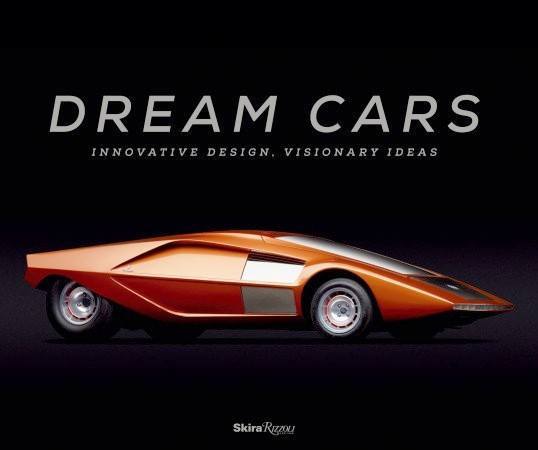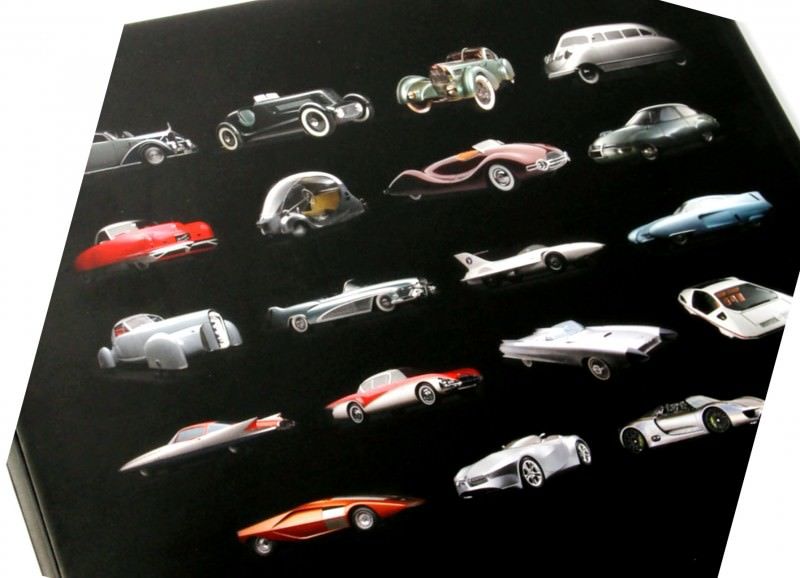1970 Lancia Stratos HF ZERO by Bertone
The Dream Cars exhibit this summer at the High Museum of Art in Atlanta is a thrilling ride through automotive history that every car lover will adore.
The collection might be far smaller than most auto shows, but the impact of every car will leave your feet cemented to the floor. And your jaw? It will often be on the floor as well.
How to rewrite that introduction? It certainly applies to this next car: the 1970 Lancia Stratos HF by Bertone.
Sitting beside the 1970 Ferrari Pininfarina 512 S Modulo, these cars firmly established how ‘Now’ and ‘Must Have’ the wedge idea was for supercars at the start of the 1970s. It would be three more years before the production Lamborghini Countach beat both these slim door-stops to market — and really established Lamborghini as much more than a one-hit-wonder with the 1965 Miura – another exotic that took the auto world by storm.
But even with this Bertone Stratos HF, you can see that the designers were grappling with usability. How to see out? How to get in?
Where to put the lights? How to give the mid-engine air the breathe?
All these questions were actually pretty vexing for designers who might be working from practical, front-engined backgrounds. Cars where the windshield and doors do exactly what they always have: provide a forward view and a place to enter and exit.
But the Stratos HF is not quite as loco as it might seem on first glance. In fact, it is more practical than the giant Ferrari 512 S Modulo sitting beside it — but we’ll touch on the Ferrari in the next article.
So how did Lancia intend to produce such a wildly futuristic, wildly wedgy, and overall wild concept car for the road?
Let’s look at the designers’ solutions to the above practicality issues in the Stratos HF design:
HOW TO SEE OUT?
This solution is quite elegant for the flat-glass front screen in the Stratos HF, as well as its complete lack of doors – and the side windows they generally bring along.
The windscreen was made hugely tall, with far more height than expected based on the chopped dimensions everywhere else. This makes it easier to see forward and past the tumbling, in-bending A-pillar shape. It would let drivers have a wider range of view depending on their height, but only going forward.
When turning or sliding sideways as the Stratos rally cars loved to do – the lack of side windows was a serious issue. So in came tinted and horizontal-line-decorated windows in the upper and lower door areas.
It still would not exactly offer a panorama of the roads in front, as the A-pillar itself is almost a half-foot wide on each side. But it does show creative and clever practical solutions.
HOW TO GET INSIDE?
Let’s see. No doors. One-piece middle bodyshell with key venting functions and style strafes all along the side of the wedge? How could anyone enter or exit this car?
Easy! That huge glass piece that serves as a mega windshield is also the door, opening on side hinge to let the driver and passenger step (or hop..) out of the car.
This might leave some muddy footprints on the leather frame-padded seating solution, but such is life.
HOW TO HAVE HEADLIGHTS?
This is exceptionally clever, and uses ideas not even Lamborghini fathomed for its scissor-door Countach. Use the slight gap between the upper and lower panels in front to add a slim – ultra-slim, really – line of lights to that minimal surface.
It allows lighting all across the width of the car to make up for the decreased output of slim-line headlights, and skips the pop-up headlamps that there is zero room for anyway! Perfecto!
AND BRAKE LIGHTS?
If you like the lighting execution up front, you will LOVE the tail. As I did.
It might be my favorite angle of the Stratos HF – with its open-mesh venting solution looking very modern in the face of the McLaren P1 and others these days.
How to have brake lights? Simply line the entire leading edge of the body shape with the same one-inch-tall lighting element as used in the front! But this time, the internal lights would be for braking and, mostly, serve as reflectors.
With the transaxle almost popping from beneath the bodywork, and the twin trumpet exhaust pipes blaring away — this was the idea closing design flourish to this wedge masterpiece.
DREAM CARS runs through September 7th at Atlanta’s High Museum of Art.
-
Plan your trip now to see these one-of-a-kind machines up close and in real life!
-
http://www.high.org/Art/Exhibitions/Dream-Cars-Innovative-Design-Visionary-Ideas.aspx
The DREAM CARS companion hard-cover book offers outstanding descriptions, insights and photography of the collection – it is available now world-wide via the High Museum shop link below.

Tom Burkart is the founder and managing editor of Car-Revs-Daily.com, an innovative and rapidly-expanding automotive news magazine.
He holds a Journalism JBA degree from the University of Wisconsin – Madison. Tom currently resides in Charleston, South Carolina with his two amazing dogs, Drake and Tank.
Mr. Burkart is available for all questions and concerns by email Tom(at)car-revs-daily.com.

